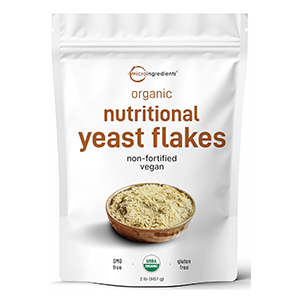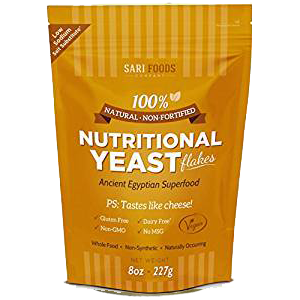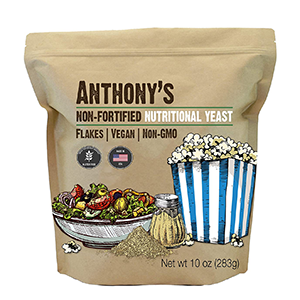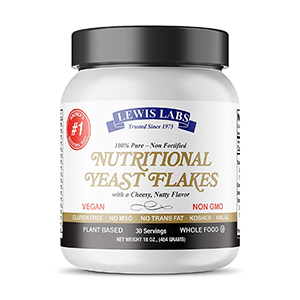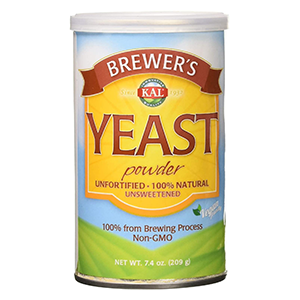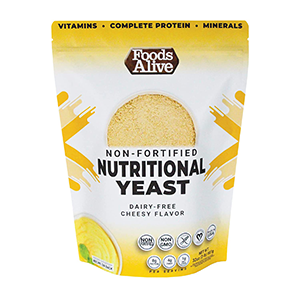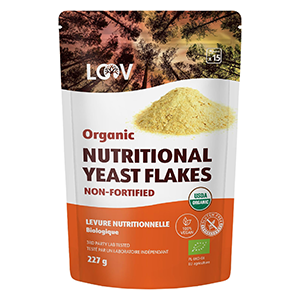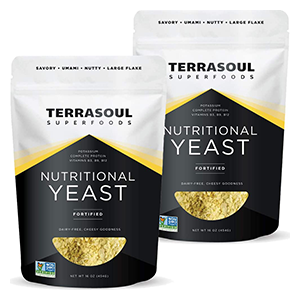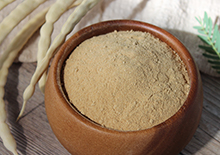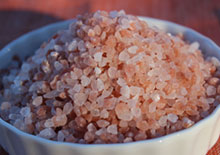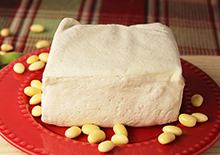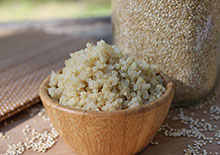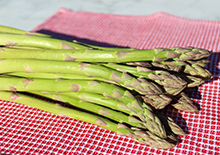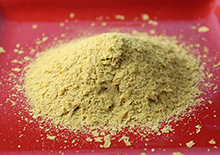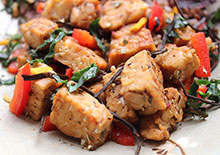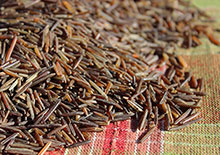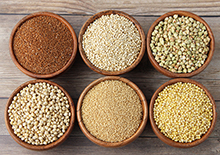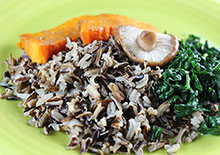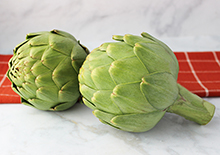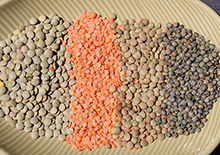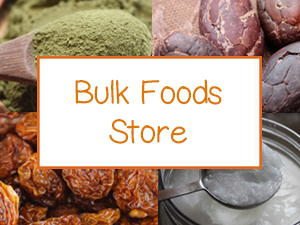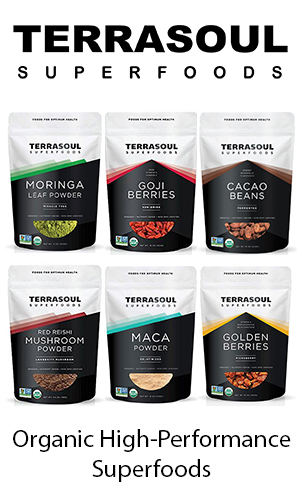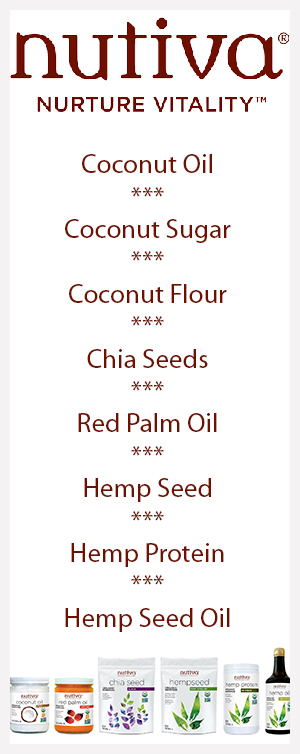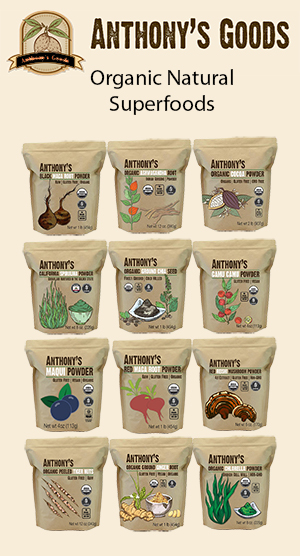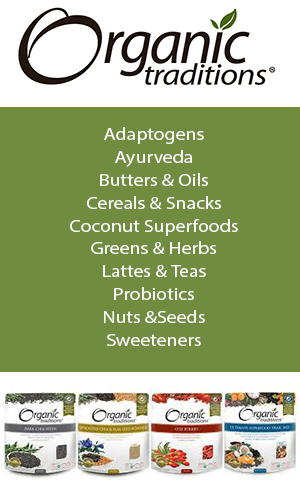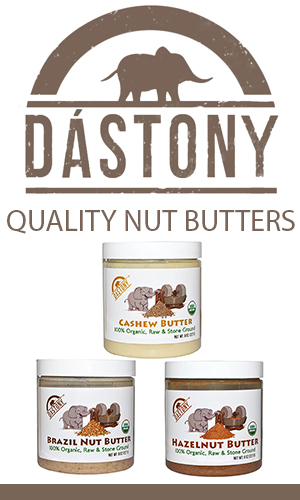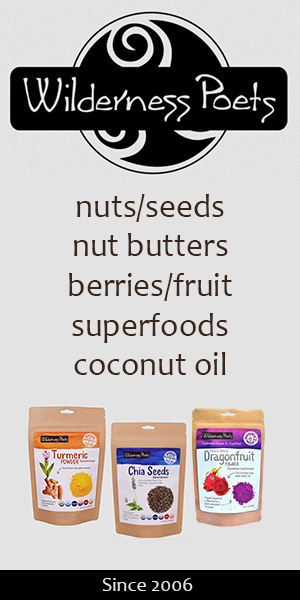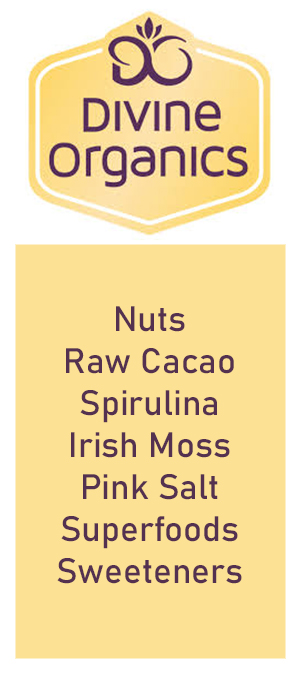- Home
- Plant-Based Cooking
- What is Nutritional Yeast?
What is Nutritional Yeast? Clearing Up Some Misconceptions
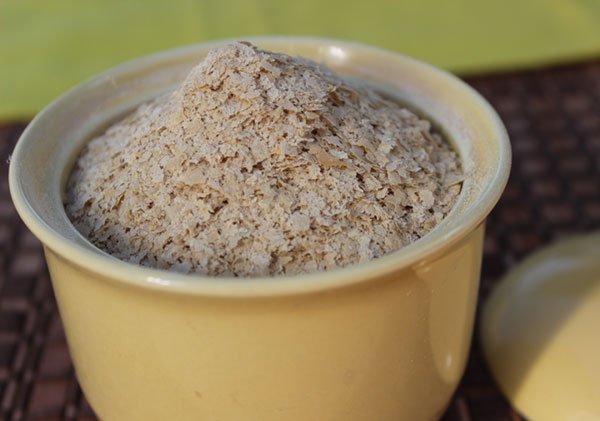
Nutritional yeast is a form of dried deactivated yeast that is most well-known as a cheesy tasting food topping, particularly popular among those adhering to a vegan or vegetarian diet.
You have most likely seen the golden-yellow flakes or powders in the bulk food bins of your local health food store, although it is now widely available at many conventional supermarkets.
Nutritional yeast is a variant of the species Saccharomyces cerevisiae, a one-celled fungus or yeast used in its active form to leaven bread and produce alcoholic beverages. It is recorded that humans first began to use this yeast species for such purposes more than 5,000 years ago.
Commercial production of inactive yeast, however, started at the
beginning of the 20th century exclusively for human consumption as a flake or powdered
condiment.
Acting as a fortifying dietary supplement, a tasty topping sprinkled on foods as well as a versatile recipe ingredient, it has been used extensively by health enthusiasts around the world for decades.
But, what is nutritional yeast exactly and are all brands created the same way?
Here on this page, we will answer these and other commonly asked questions.
How is Nutritional Yeast Traditionally Made?
Nutritional yeast is commercially produced in large quantities by fermenting specific strains of the mentioned Saccharomyces cerevisiae species which feed on a sugar medium, typically molasses derived from sugarcane and/or beets.
After several days, the top fermented yeast liquid layer is harvested and then put through a "separator" to produce a "cream yeast." This substance is then pasteurized and vitamins are usually added to "fortify" or nutritionally enhance its naturally-present nutrient levels.
The cream yeast is then typically roller drum dried with heat to render the yeast cells inactive, a process of which stops them from growing or reproducing and also concentrates nutrients and protein content. The dried deactivated yeast sheets form thin flakes or can be further ground to produce a powder.
The commercial process of making nutritional yeast is highly monitored in a controlled laboratory setting to avoid contamination of other yeast strains or microorganisms.
Common Questions About Nutritional Yeast
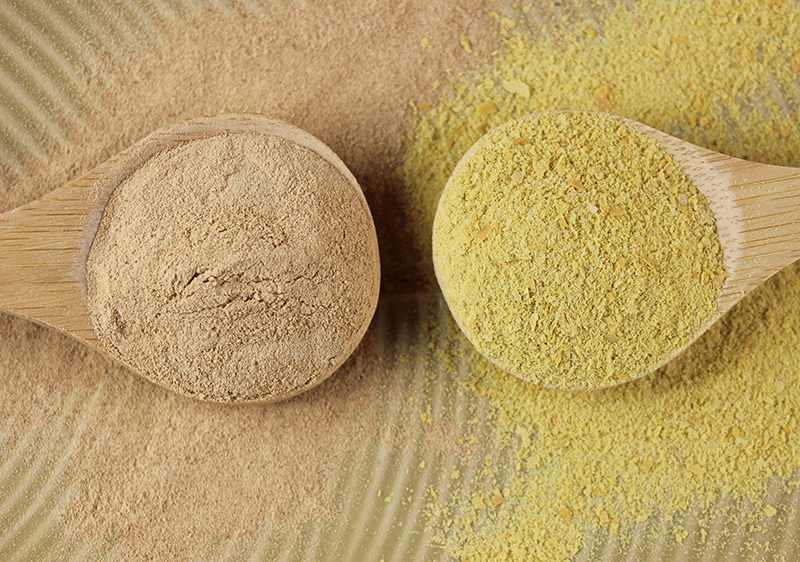
Is Nutritional Yeast and Brewer's Yeast the Same Thing?
Nutritional yeast is often confused with brewer's yeast, but the two are slightly distinct from one another.
Brewer's yeast, like the name implies, was initially a byproduct of brewing beer but is now also "primary grown" for supplemental use. It comes from different strains of the Saccharomyces cerevisiae or "top fermenting yeast" that are chosen, along with other yeasts, for their ability to produce alcohol as well as impart unique flavors when making beer.
Although brewer's yeast is deactivated and prepared as a nutritional supplement, similar to nutritional yeast flakes, it is slightly bitter tasting with a stronger fermented grain-like flavor. Depending on one’s taste preferences, it can be less palatable as a food topping, but is good for broths and gravies.
Brewer's is also typically more of a golden-brown color as opposed to yellow.
The biggest difference between the two, from a health perspective, it that brewer's yeast is most always produced on a grain medium, rather than molasses, so it is not a gluten-free food. It does, however, contain some B vitamins, minerals and protein content.
Brewer's yeast or autolyzed yeast extracts are a commonly used ingredient in the food industry as a flavor enhancer. It is one of the main components in the food spreads Vegemite and Marmite.
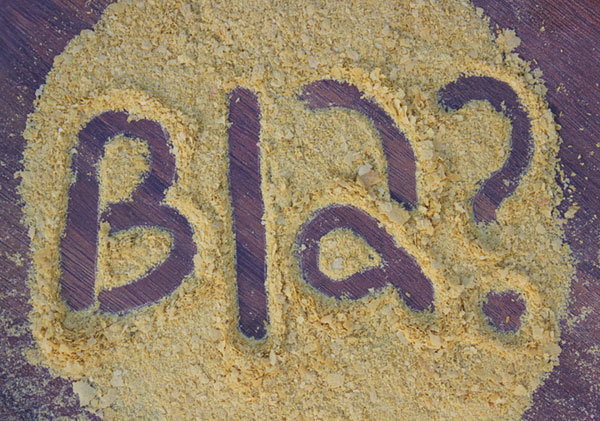
Does Nutritional Yeast Contain Vitamin B12?
Nutritional yeast is not a natural source of B12, but this vitamin is most always found as an added ingredient when the yeast is "fortified." This covers about 97% of the products currently on the market as of October 2017.
This type of yeast cannot itself produce B12, it is rather "nutritionally-enhanced" with B12 that is added before the drying process.
Unfortunately, most all manufacturers choose to use low quality synthetic vitamin additives and forms of B12, like cyanocobalamin, which we would not recommend consuming for complete absorbability or a balanced nutrient uptake.
If you are vegan we do not advise using nutritional yeast as your primary B12 supplement as it is not a reliable source of this essential nutrient. A quality B12 methylcobalamin-based supplement is a much better option.
Nutritional yeast product labels often display B12 ratios along with other various nutrients, which are specific to each manufacturer. Most
nutritionally-enhanced products additionally add synthetic B-complex vitamins such as
folate, biotin, B1 (thiamine), B2 (riboflavin), B3 (niacin), B5 (pantothenic acid) and B6
(pyridoxine). Lower amounts of synthesized minerals may also include
iron, selenium and zinc.
Non-Fortified Nutritional Yeast
Nutritional yeast, however, does naturally contain many B-complex nutrients and, in the last several years, a few brands are now choosing to produce "non-fortified or unfortified" nutritional yeast to meet consumer health preferences and demands for non-synthetic products.
While the addition of B vitamins to "fortified" nutritional yeast often
produces a brightly colored yellow flake or powder, unfortified
varieties are much paler and/or golden by comparison. The taste is still as flavorful, but without the chemical aftertaste that fortified versions are often described to have.
Two of our favorite manufactures producing unfortified/non-fortified nutritional yeast include Sari Foods and Foods Alive. They both have a fairly impressive nutrient list that includes many of the B-complex vitamins.
There are also several organic brands using a "yeast autolysate", similar to brewer's yeast, that is unfortified but is not a gluten-free food as it is grown on grain. The brand Kal likewise now offers an unfortified nutritional as well as brewer's yeast product. According to direct communications with Frontier Co-op, their yeast is not fortified, even though it doesn't state so on the label.
B-Complex Vitamins on Two Unfortified Labels
(percent daily values based on a 2000 calorie diet)
Sari Foods - 2T
- B6 (pyridoxine) - 480%
- B5 (pantothenic acid) - 350%
- B1 (thiamine) - 140%
- Niacin - 70%
- Biotin - 6%
- B2 Riboflavin - 2%
Foods Alive - 3T
- B6 (pyridoxine) - 480%
- B5 (pantothenic acid) - 330%
- B1 (thiamine) - 17%
- Niacin - 75%
- Folate - 10%
- B2 - Riboflavin - 5%
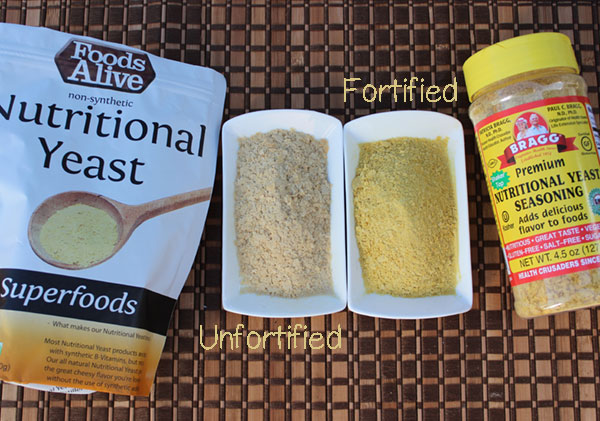
Is Nutritional Yeast a Source of MSG?
Nutritional yeast does not contain MSG, or monosodium glutamate, but it is a source of the naturally occurring amino acid known as glutamic acid. MSG is isolated from sodium salt and synthesized from glutamic acid that is chemically altered and best avoided.
The glutamic acid in nutritional yeast, unlike MSG, is bound to other proteins or amino acids. In other words, it is in a form that our bodies can absorb efficiently and appropriately utilize. As an important neurotransmitter, it is vital for healthy brain development and function.
Glutamic acid is the component of nutritional yeast that provides benefits as a flavor-enhancer and gives it a rich mouth-watering umami-like flavor that makes it hard to stop eating. This amino acid is also present in other foods, like the seaweeds dulse and nori.
Can Nutritional Yeast Cause or Promote a Candida Infection?
There is not a whole lot of research on nutritional yeast and its effects on human health and, currently, there is a bit of controversy about whether regular consumption can cause or exacerbate a candida infection.
Unlike other types of active yeast, like the scoby cultures used to make kombucha, nutritional yeast is inactive (not living) and is largely considered by health authorities NOT to encourage or affect a candida condition.
According to the Weston Price Foundation, "Unlike yeasts from the Candida genus, S. cerevisiae is non-pathogenic and does not cause or contribute to infection." (*)
However, other reputable sources argue that nutritional yeast should not be consumed by those with candida. The Body Ecology website states that it is "usually not well tolerated by someone with a yeast infection or overgrowth." (*)
It is therefore important to take heed if you are healing from such health issues.
Is Nutritional Yeast a Good Source of Protein?
Nutritional yeast is known also for its higher amino acid content and is considered a "quality" or "complete" easily digested protein-rich food, containing all essential amino acids.
Its higher ratios are due to the fact that the active yeasts, which are grown on a sugar medium, are naturally forced to manufacture their own amino acids and other vitamins as a biochemical response.
The amount of protein may vary depending on the supplier. Most nutritional yeast labels average between 2-4 grams per heaping tablespoon. By comparison, one egg contains roughly 5-6 grams of protein.
While it shouldn't be your only protein source, it is a good way to supplement, especially when adhering to a vegan and vegetarian diet.
Selecting Nutritional Yeast Brands
While nutritional yeast can be a tasty food condiment as well as convenient way to nutritionally enhance the diet with B vitamins, some minerals and protein, there are certain aspects that you may wish to contemplate when choosing your yeast products.
1) Fortified Vs. Unfortified - Most health experts agree these days that it is best to consume food-based vitamin supplements rather than synthetically-derived varieties. Since most nutritional yeast on the market is indeed heavily fortified with synthetic B vitamins and minerals, you may want to consider other options especially if you use it on a regular basis. Using a fortified product once in a while is no big deal, but we would avoid long-term daily use.
2) Non-GMO Verified - Since most nutritional yeast is grown on two high risk genetically modified food crops, beets and sugarcane, it is imperative to select brands that are non-GMO verified.
3) Lead Testing - In 2015, detectable levels of lead were found in some nutritional yeast brands. (*) While these levels complied within industry standards, if consumed in excess toxicity could occur. As a consequence, some manufacturers run independent laboratory testing to provide transparency to their consumers.
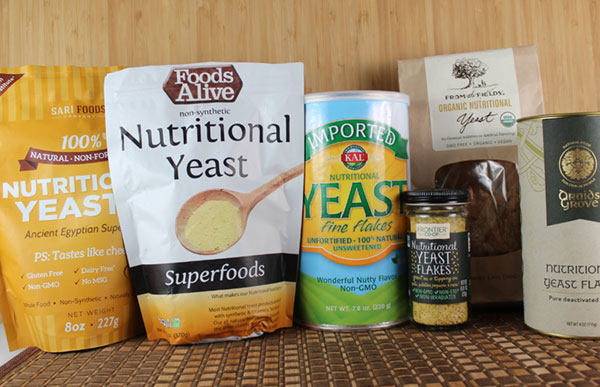
Top Non-Fortified and Fortified Brands
These are some of the top U.S. or online brands (as of Oct 2017) that we have directly communicated with to verify the following information.
Non-Fortified / Non-GMO
- Sari Foods (Lead Tested)
- Foods Alive (Lead Tested)
- Kal (Imported or Brewers)
- Lewis Labs
- Druids Grove (Organic)
- Dr. Fuhrman
- Anthonys Goods
Fortified / Non-GMO
- Bragg's
- Hoosier Hill Farm (Lead Tested)
- Bob's Red Mill
- Kal
- Frontier
- Kevala
- Now Foods (Lead Tested)
- Starwest Botanicals
How to Use
The cheesy, nutty flavor of nutritional yeast flakes are traditionally used as a food condiment on salads and a variety of other savory dishes. It is commonly utilized as a recipe ingredient when preparing vegan cheese-like sauces or to thicken soups, dips and dressings.
It is also popular as a popcorn topping. We personally use it when making raw vegan macaroni and cheese, cheesy kale chips or in an assortment of dehydrated cracker recipes.
Precautions:
Fortified nutritional yeast should be used with caution by those sensitive to synthetic folic acid concentrations. In rare cases, excessive amounts of nutritional yeast, due to its higher phosphorus content, may cause calcium deficiency.
Shop Related Products (About Affiliates & Amazon Associate Paid Links)
Affiliate Disclaimer: This section contains affiliate product links. If you make a purchase through our recommended links, we receive a small commission at no additional cost to you. Thanks for the support.
